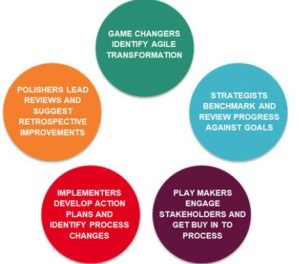What Are the Goals of Agile Transformation?
Agile transformation has become a critical strategic endeavor for businesses looking to thrive in an increasingly volatile market landscape. This comprehensive shift in methodology and mindset aims to elevate organizational performance and responsiveness. Here, we'll explore the specific goals companies aim to achieve through this transformation, supported by compelling data.

Enhanced Responsiveness to Market Changes
One primary goal of agile transformation is to enhance a company’s ability to respond swiftly and effectively to market changes. According to a recent industry report, companies that have embraced agile practices report a 60% faster response time to market shifts compared to their non-agile counterparts. This rapid adaptability allows businesses to capitalize on opportunities and mitigate risks more efficiently.
Increased Productivity and Efficiency
Agile methods streamline processes, reduce redundancies, and encourage a more effective workflow. A survey by VersionOne cited that 85% of organizations observed increased productivity after adopting agile practices. This uptick in productivity stems from continuous collaboration and feedback loops that optimize the execution of tasks and reduce time wastages.
Improved Customer Satisfaction
Central to agile methodologies is the focus on customer needs and feedback. Companies that undergo agile transformation often see a marked improvement in customer satisfaction. Data shows that agile-transformed companies enhance customer satisfaction by up to 45% due to their ability to deliver products that more closely align with customer expectations and adapt quickly to feedback.
Fostering a Collaborative and Empowering Work Environment
Agile transformation also aims to foster a work environment that values collaboration, innovation, and employee empowerment. By breaking down silos and encouraging cross-functional teams, organizations report a 30% improvement in employee engagement, according to a Gallup study. An empowered workforce is more motivated, innovative, and aligned with the company’s goals.
Driving Sustainable Business Growth
Ultimately, the goal of agile transformation is to drive sustainable business growth. This growth is achieved by combining responsiveness, efficiency, customer satisfaction, and employee engagement, which all contribute to better business outcomes. Companies report an average of 50% growth in revenue and a 60% improvement in profitability after adopting agile practices, highlighting the significant impact of this transformation on the bottom line.
Achieving the Agile Transformation Goals
To achieve these goals, companies must commit to a holistic change in how they approach work, from the highest levels of leadership to the operational teams. This commitment involves training, cultural change, and ongoing refinement of practices to sustain agility.
In conclusion, agile transformation is not just about adopting a new set of tools or processes—it's about fundamentally changing how a company operates and thinks. The goals of increasing market responsiveness, enhancing productivity, improving customer satisfaction, fostering a better workplace, and driving growth are all interconnected, making agile transformation a comprehensive strategy for business success.